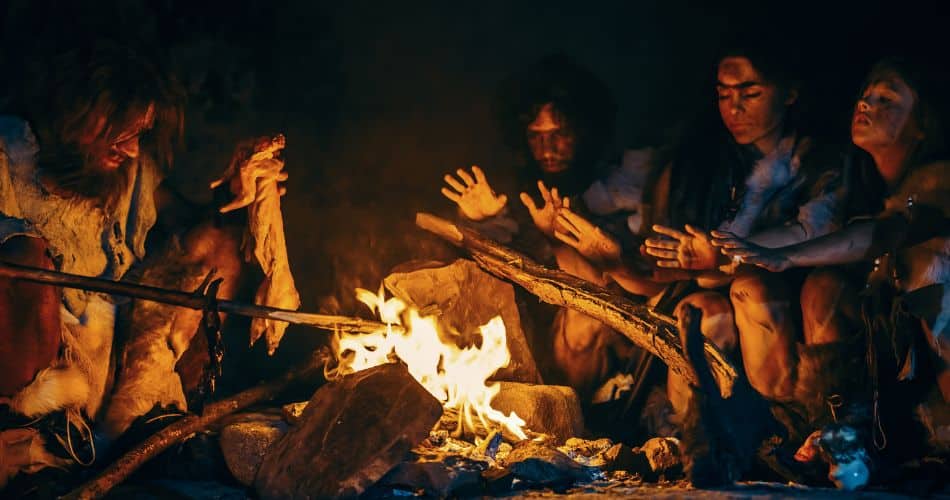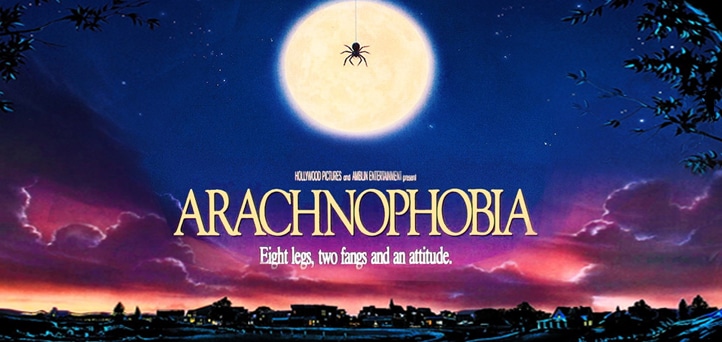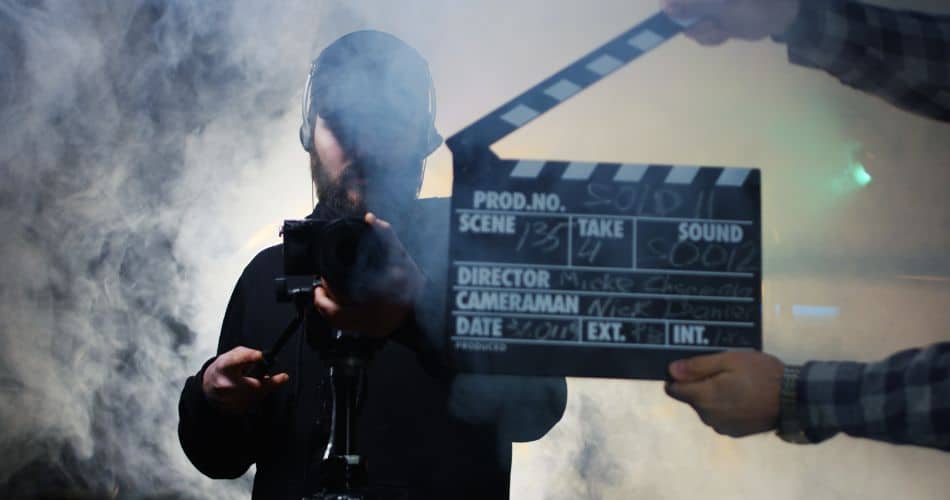
Horror is a genre that has been around since the dawn of cinema. From early films like House of the Devil (1986), Nosferatu (1922) and Dracula (1931) the genre has frightened and inspired audiences and writers alike.
Love them of hate them, horror films are a staple in cinema.
But why do we like being scared?
Horror films tap into our most primal emotion, fear. They provide a cathartic release leaving us feeling exhilarated and alive. It’s no wonder that those of a nervous disposition tend to avoid them.
If you’re a fan of the genre, you probably have a few ideas on how you’d write your own horror screenplay. But writing horror isn’t easy. To terrify your audience, you need to be able to tell a story that resonates on a primal level. You need to know the tropes and common pitfalls of the genre and use this knowledge to keep your audience on the edge of their seats.
In this article, we’ll discuss some tips and tricks for writing horror screenplays that will scare your audience and keep them coming back for more.
8 Tips to Help You Write a Horror Film
1. Know the Genre
The first step to writing a great horror screenplay is to know the genre. Horror is a broad genre that encompasses everything from slasher films to supernatural thrillers. It’s important to know what kind of horror you’re writing, so you can tailor your screenplay accordingly.
If you’re writing a slasher film, you’ll want to focus on creating a killer who is both terrifying and memorable. Think Jason, Michael Myers and Norman Bates.
If you’re writing a supernatural thriller, you’ll want to focus on creating an otherworldly atmosphere that will keep your audience guessing.
Every sub-genre will come with its own tropes and you’ll be expected to lean into these or subvert them in a way that surprises your audience. Remember, you have to learn the rules before you break them. So, make sure you spend some time watching films in your target genre before you start writing.
2. Create Tension
Tension is the key to any good horror film. Without tension your audience won’t hiding behind a cushion. You want to create a sense of dread that builds throughout the film, until it explodes in a shocking climax. Some of the best scenes in horror are when the characters are blissfully unaware how close to danger they are.
One effective way to create tension is to use the environment to your advantage. For example, set your film in a creepy old mansion or a deserted forest, and use the environment to create a sense of unease.

3. Develop Strong Characters
Strong characters are essential to any good horror film. You want your audience to care about the characters so that they’re invested in the outcome. If your characters are bland and one-dimensional, your audience simply won’t care if they get killed.
In most teen-slasher movies, the writers lean into character stereotypes to allow the audience to get into the story quickly. Most viewers have seen a slasher film and know that an ensemble cast just means more people to kill off. If you can give your characters some unique perspectives in the story, your screenplay will come off as more well-rounded.
Think about backstories and motivations and look for ways to make your characters relatable in some way. You’ll also want to make them flawed so you can exploit this later.
4. Focus on the Visuals
In horror screenplays, visuals play a crucial role in creating a sense of fear and dread.
To ensure your screenplay effectively translates into a terrifying film, it’s essential to focus on creating strong visuals that will capture your audience’s attention and immerse them in the story.
Using vivid and visceral descriptions can really help to paint a picture in your audience’s mind.
For example, instead of simply stating that a scene takes place in a dark and creepy forest, describe the way the trees loom overhead, casting eerie shadows on the ground.
Imagine you’re sat around a camp fire telling scary stories, how would you make the story come to life? You want your reader to feel what the audience will feel, so make sure you’re creating an experience with your words.

Foreshadowing is also a really powerful tool in horror, and can be used to hint at the terrors that are to come. For example, you might describe a cracked mirror in a character’s bedroom, or a shadowy figure lurking in the background of a scene.
These subtle details will build tension and anticipation. You can also use short, sharp sentences to convey the pace of a chase or fight scene.
5. Don’t Forget Sound
When creating a horror film, the sound is equally important to the visuals so think about including sound cues in the script. This can really help bring the experience to life.
Jump scares are a staple of horror films, by using a sudden loud noise, such as a scream or a bang, you can make the audience jump out of their seats and deliver a genuine scare. In a screenplay you could make it stand out by giving the sound a single line, like this:
“BANG!”
“SNAP!”
The key to a good jump scare is to make sure it is unexpected and catches the audience off guard. By using sound in this way, you can create a visceral reaction.
You can also use sounds or music cues to subtly hint at what is about to happen, creating a sense of anticipation in your audience. For example, the sound of a distant howl or a haunting melody can foreshadow the arrival of a monster or a supernatural entity.
6. Understand the Rules
The horror genre is known for its specific rules that writers and filmmakers often abide by. However, some creative minds have successfully subverted these conventions over time, surprising their audience in the process.
Breaking these rules intentionally is a risk, as certain elements are essential to the horror genre but sometimes it can pay off.
Some of these rules of horror are:
- The story must inspire fear.
- It should have at least some gore and violence.
- There should be a monster or villain
- There is often a helpless protagonist
- Usually it’s set in a confined space your protagonist can’t escape from.
- Have a likeable lead character.
While some films have bent these rules, such as Cabin in the Woods (2011), which intentionally stereotyped unlikeable characters, breaking the rules can sometimes backfire.
For instance, the film “Arachnophobia” (1990) features killer spiders from South America and takes place throughout an entire town, breaking the confined space rule. Despite being a cult classic, this left some audiences confused about why the characters didn’t just leave town to escape the spiders.

Successful rule-breaking can lead to innovative and memorable horror films that challenge and elevate the genre. But always remember why you are doing it and what you want the audience to experience as a result of it.
If you want to find out more about the elements of horror check out this blog post by Celtx.
7. Be Scary
This might seem obvious, but so often, writers can get caught up with the plot and forget to be scary. If you’re struggling to write, think about what makes you feel frightened. Whether that’s now or when you were a child. Were you afraid of a monster under the bed?
Did you think a vampire was lurking outside your window, or maybe a clown at a birthday party was your worst nightmare? Dig deep, and you might just find that these references can be a great way to find a unique spin on an idea. Tap into that fear, and you’ll be so much more scary!
Remember that your audience will all have different fears you can exploit. So, having more than one scary thing or moment in a horror will help you reach a wider audience.
8. Understand Low budget vs High Concept
When it comes to horror, there are two main categories that can affect how your story is perceived by audiences: low budget and high concept.
Low-budget horror films typically have a limited budget for production, which can affect the scope of the story and the quality of special effects. On the other hand, high-concept horror films have a unique and engaging premise that immediately grabs the attention of the audience and can be summarized easily in a single line.
As a writer, understanding the difference between these two categories is crucial when developing your idea, as it can greatly impact how you approach the story, the characters, and the overall production of the film.
Low budget horror films can still be successful and memorable, as they often rely on creative solutions and storytelling to make up for the lack of resources. Likewise, high concept horror films can also have limited budgets, but the strength of the concept can help to elevate the overall production value and make the film stand out.
Low Budget
The Blair Witch Project (1999) was a found footage film about a group of teenagers trying to make a documentary about a local folktale. The film became a huge success and is even considered a cult classic, not because of the monster but because of the style of filmmaking. The film was made for around $60k and grossed over $248 million in box office sales.
This innovative style of filmmaking was one of the films that paved the way for the found footage genre. “Paranormal Activity” (2007), “Grave Encounters” (2011), and “Hellhouse” (2015) are all examples of films that exploited the genre and brought something new to it.
In more recent years, filmmakers have even experimented with the genre to accommodate shooting restrictions, such as with the movie Host (2020). The host was shot during the pandemic over Zoom. Using the limitation of not being able to film together to become the hook for the movie was a refreshing take on the found footage genre.
Of course, not all low-budget horror is found footage. This is just one of the more common filmmaking styles because it can be done cheaply, and you can get away with poor camera quality and a smaller cast and crew.

High Concept
A “high concept” film is typically one that can be easily summarized in a single sentence or idea, and often involves a unique or imaginative premise that immediately grabs the audience’s attention. This type of film is often sought after by studios as they can be more marketable and generate buzz.
A prime example of a successful high-concept horror film is “A Quiet Place” (2018). The film tells the story of a family struggling to survive in a world overrun by blind creatures with hypersensitive hearing. The film’s unique premise of relying on silence to avoid detection created a suspenseful and innovative atmosphere, and the film’s box office success proved the appeal of the high concept.
“The Conjuring” (2013) is another successful high-concept horror film that was made on a relatively modest budget. The film follows paranormal investigators Ed and Lorraine Warren as they investigate a haunted house in Rhode Island. The film’s high concept of a real-life paranormal case that was never officially solved, combined with strong performances and effective jump scares, helped make it a box office hit and spawn a successful franchise.
Conclusion
Writing horror is all about creating fear and unease in your audience. Whether through a frightening monster or an unnerving atmosphere, your goal as a horror writer is to make your readers or viewers feel a sense of dread.
Try to think outside the box and develop unique ideas that will leave a lasting impression on your audience. With practice, research, and a willingness to take risks, you can become a master of the horror genre. If you want to learn more about writing horror, why not look at Lessons From 5 Classic Horror Scripts.

